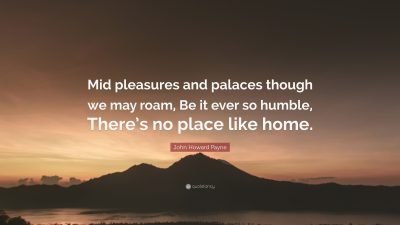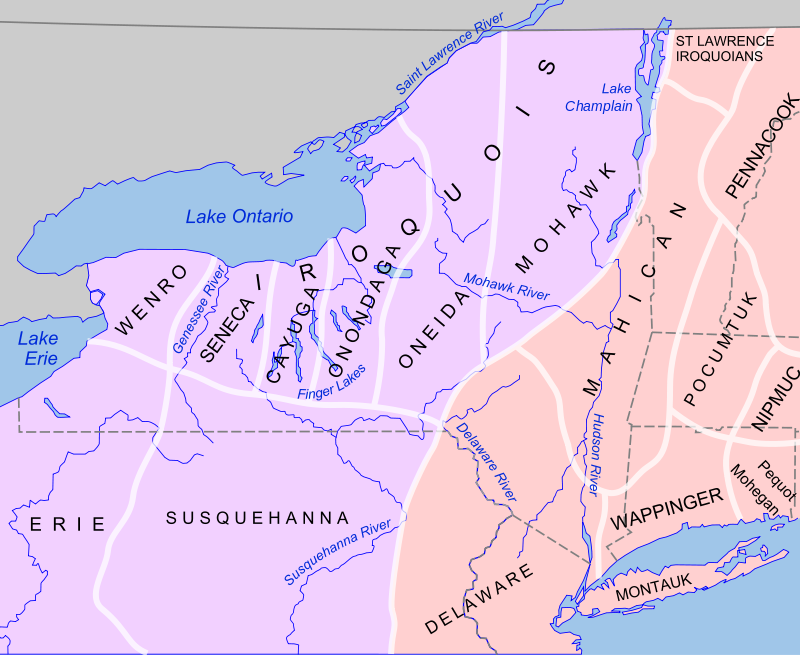
This blog is the third in a series of five about the issue of Columbus Day versus Indigenous Peoples’ Day. The first one Columbus Day versus Indigenous Peoples’ Day: A Lose-Lose War arose due to some recent state decisions to “dump” or “ditch” Columbus Day in favor of Indigenous Peoples’ day. The second Columbus Day versus Indigenous Peoples’ Day: Part II – Columbus and America examined the place of Columbus and Columbia in American history. This blog will examine the use of the word “indigenous.” In the following blogs, I will address how this war happened and suggest what we should do about it.
The following items about the meaning of “indigenous” are the product of reading the newspaper daily. In my case it is the New York Times. These examples are not the result of internet searches or exhaustive research. They derive from current events provided one pays attention. Dates are from the print editions
TRADITIONAL MYTHS MIXED WITH TECHNOLOGY: A GROUP OF INDIGENOUS FILMMAKERS PRESENTS NINE SHORT MOVIES IN A RETROSPECTIVE (May 17, 2019)
Who are these “Indigenous” people? The article does identify them but the title is telling. In the previous blog I mentioned the Italians, Irish, and Germans in America. Can you imagine an article about filmmakers from any of these people that did not identify them by name in the title? Or by black people? Instead, “Indigenous” is treated as a capitalized proper noun as if it were the name of the people. It conveys the message that there is a global people called Indigenous as if they are a single people.
Where in the world are these Indigenous people located anyway? Are they Indigenous Canadians? Indigenous Americans? Indigenous Mexicans? Indigenous Peruvians? I exclude Europe because rarely if ever are white people referred to as Indigenous. That exclusion is part of the weaponization of the term. In fact white people, non-capitalized, are separate from Indigenous people in the article. As it turns out in this instance the Indigenous people are in Australia.
How do Indigenous people live? According to this article, Indigenous life is one of “hunting, fishing, lounging in the stunning and rugged landscape, interacting with condescending local [white, one presumes] bureaucrats.” Keep in mind the pre-technology description of the people living a Paleolithic life. That description of a simpler life also is part of the weaponization of the term to be addressed in the next blog.
THEIR ISLANDS ARE ERODING, AS ARE THEIR HUMAN RIGHTS, A CLAIM SAYS (MAY 13, 2019)
Once again the Indigenous people are Australians but this time on islands. They are very small islands compared to the main island of Australia. These islands are threatened by the rising seas due to global warming. According to a lawyer involved in seeking to resolve this situation on behalf of the Indigenous people:
“If Indigenous people are disposed of their homelands, then they can’t continue to practice their culture.”
It should be comforting to know that if we non-Indigenous people are disposed of our homelands we still will be able to practice our culture.
CANADIAN INQUIRY DESCRIBES KILLINGS OF INDIGENOUS WOMEN AS GENOCIDE (JUNE 4, 2019)
Given that Indigenous people are located globally except for Europe, one might think that to perpetrate a genocide against them would require a global action. However, that is not the case. Putting the inconsistency aside, what is striking about the article is the reference to the people attending the announcement of an inquiry into these killings:
Most in the audience were in traditional Indigenous dress and held red flowers in remembrance of the women.
They did not wear traditional Irish dress or Greek dress or Ukrainian dress but an Indigenous dress worn by all Indigenous people.
LOUIS LEVI OAKES, 94, THE LAST OF THE MOHAWK CODE TALKERS (JUNE 5, 2019)
In this instance, the title identifies the person as a Mohawk and not as an Indigenous person. The article does recount the use of indigenous (non-capitalized) languages. It lauds the “contributions of indigenous soldiers in World War II.” The obituary reads like a composite. Part of it seems to have been written in pre-politically correct times when American Indians were referred to by their proper noun names. Four different tribes are mentioned in the article. Another reads as if the word “Indian” in the original obituary subsequently was cleansed and replaced by “indigenous.” I cannot prove that but it is an odd mixture of the traditional and the politically correct.
Suppose now you were an historian thousands of years from now and came across these articles. Wouldn’t it be reasonable to include that all Indigenous people wore the same traditional clothes, practiced hunting, fishing, spoke the same or similar languages, and were condescended to by presumably white bureaucrats? Australia, islands, Canada, United States, it’s all the same. They are all Indigenous. How would you they are different? Don’t these descriptions remind you of the phrase “if you’ve seen one Indigenous people, you’ve seen them all”? Doesn’t the depiction of these people remind you of two-dimensional Disney characters? Isn’t the condescension of the politically correct white people abhorrent and degrading?
Let’s turn to some more explosive political situations.
UNDER MODI, HINDU RIGHT CONSOLIDATES POWER (APRIL 13, 2019)
In this situation, the indigenous peoples are Indians. They practice the Hindu religion. They are in conflict with the non-indigenous Moslems. One Muslim complained of the treatment.
“I could be lynched right now and nobody would do anything about it. My government doesn’t even consider me Indian. How can that be when my ancestors have lived here hundreds of years?”
These foreigners will never belong in India. They can never become indigenous. They will always be the outsiders to the native Indians who have superior numbers and power unlike the American Indians. This foreigner fears being lynched by the indigenous people. As nationalist Prime Minister Narendra Modi asked:
“Who attempted to defame our 5,000-years-old culture? Who brought the word Hindu terrorism? Who committed the sin of labeling Hindus as terrorists?”
As one supporter said:
“[I]f Hindus can come together and Muslims can be defeated, then India can regain its past glory.”
India is not looking to an imaginary Wikanda or to the Paleolithic past. These indigenous people of 5,000 years are looking to defeat the non-indigenous foreigners in this world. Since this newspaper article was written, Modi won his re-election by a huge amount. Score one for the Indigenous people over the outsiders.
LIVING IN A NOWHERE LAND: NEARLY A MILLION ROHINGYA MUSLIMS HAVE BEEN EXILED TO BANGLADESH. WILL THEY EVER GET TO LEAVE? (Time, June 3-10, 2019)
This article recounts the plight of the Muslim Rohingya. They have been displaced by Myanmar Buddhists. According to Wikipedia,
Myanmar law does not recognize the ethnic minority as one of the eight “national indigenous races”.
Score two for the Indigenous people over the outsider.
FIGHTING FOR THE SOUL OF ISLAM (MAY 3, 2019)
This op-ed piece followed the Easter Sunday bombings in Sri Lanka. According to the Sri Lanka Moslem author:
Sri Lankan Muslims trace our roots back to the Arab traders and Sufi mystics who brought Islam to Sri Lanka in the seventh century.
That doesn’t cut it. Whether it was the hundreds of years cited in the Indian article above or 1300 years here those time frames do not make you a native. You are not indigenous to Sri Lanka. You will always be an outsider and never will belong there.
The reference to the Arabs and the seventh century is a reminder that Arabs are scarcely indigenous anywhere. Loosely speaking they originated in the area where Saudi Arabia, Iraq, Syria, and Jordan come together. They are not indigenous to Lebanon, Palestine, Israel, Egypt, Libya, Algeria, Tunisia, Morocco, Sudan, Yemen, Kuwait, Qatar, United Arab Emirates, and most of the those four countries. Thanks to the camel they began to expand outwards as traders, mercenaries, and guides beginning in the 9th century BCE, over 1500 years before Mohammed. Some Arabs were forcibly resettled by the non-Arab Assyrians. The big push occurred in the seventh century when the Arabs conquered much of the Middle East and imposed their religion on the locals. Sounds like Spain in the Western Hemisphere doesn’t it? Christian Lebanese sometimes identify as non-Arab Phoenicians who were in the land before the Arabs. A recent article on DNA analysis DNA from Medieval Crusader Skeletons Suggests Surprising Diversity concludes:
Today’s Lebanese people are clearly descended from the people who have lived in the area since the Bronze Age, with little trace of the temporary European invaders.
That Bronze Age ended roughly 2000 years before the Arab invasions. The Arabs are indigenous only to a small area of the lands they occupy today.
Consider this final example from op-ed columnist Nicholas Kristof (“The Missing Element to Beat Poverty” [May 30, 2019]). He describes his visit to Paraguay. While there he encounters indigenous people. He chooses not to capitalize the word unlike the reporters for the newspaper. He writes about the economic hardships these people face and likens it to the plight of indigenous people around the world from America to Australia. Now suppose this woman he met emigrated to the United States, would she still be indigenous? Or since she was from Paraguay would she be classified as Hispanic? When indigenous people are repressed by non-indigenous people in Latin America, how should they be classified when both of them come to America?
That very issue was raised in “The Brutal Math of Asylum” (March 10, 2019). The article describes another woman who:
was part of the Garifuna community, descendants of enslaved Africans and Indigenous Central Americans [in Honduras].
Notice the reporter capitalizes Indigenous. So what is this person if she is granted asylum in America? Is she still Indigenous even though she no longer lives in her homeland? Is she Hispanic because she is from Central America even though she seems to have no European ancestry? Is she African American even though she was not part of the middle passage to the United States (like Obama and Harris)?
In a previous blog not sent to the history community, I wrote: How the Politically-Correct Helped Elect Donald Trump…..in 2016
The issue of American Indians bears further analysis. In the United States there are Indian nations or tribes. Demographically they are categorized separately from other peoples. What about Indian peoples from south of the American border. How are they classified? Consider this letter from my local paper (2/15/19) entitled “I’m not Latin:”
Let me start off this letter by saying that I’m not Latin nor am I Hispanic, Latino, Spanish, or Latin American. These wildly misleading terms for Spanish-speaking Americans are implicative of European colonization and its culturally-corrosive ethos. My family heritage is that of the Quechua peoples of Ecuador, and many Spanish-speaking individuals I’ve encountered find offense in being subjected to a label that misconstrues their ethnicity (i.e., “Latin”). I consider myself an Indigenous Americano, so don’t call me or my Central and South American neighbors “Latin” or any of the misguided aforementioned labels.
When I was growing up I don’t recall hearing the word “indigenous” often. Peoples usually had real names. Sometimes they were their own names, sometimes they were the names others applied to them – Indians, Asians, Egyptians, etc. Now these Eurocentric names are to be banished from polite conversation. People are to be referred to as Indigenous no matter where they are in the world. The word “Indigenous” has now been weaponized by some white Americans in the culture wars against other white Americans and imposed on people who had names for themselves and never used the word “Indigenous.” The result is a simpleminded, superficial, bogus term that produces strange results when removed from the American context that created it. Why did the politically correct unleash this weapon?
To be continued.






